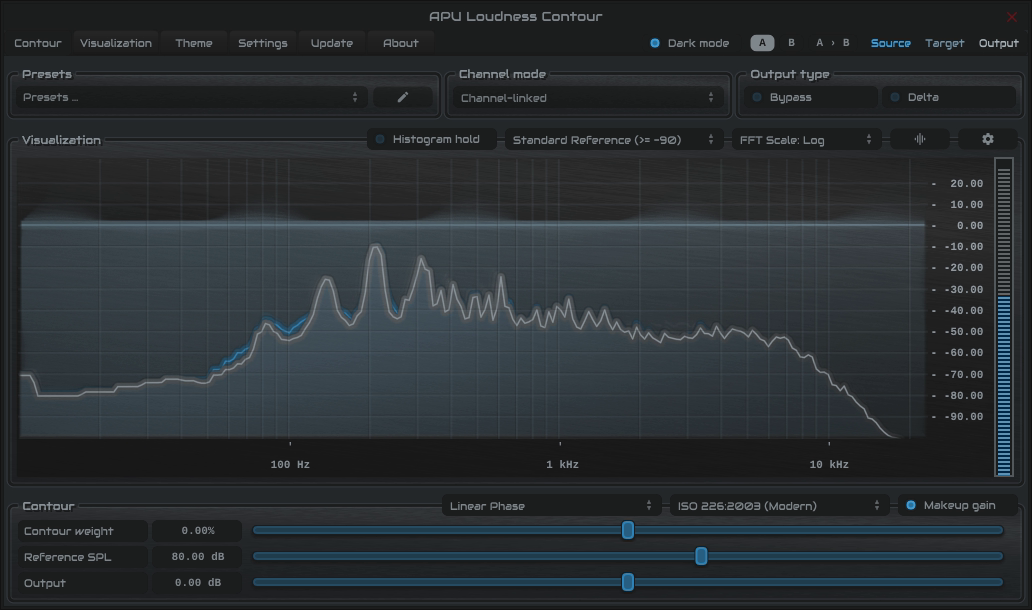One of the key features of this plug-in is its support for a wide variety of loudness contours. Each contour models a specific equal-loudness perception curve used across audio metering,
broadcasting, psychoacoustics, or legacy equipment standards.
The contour weight parameter allows fine-grained control over each model, either enhancing or inverting the effect. This enables creative spectral shaping, perceptual balancing, or subtle coloration.
K-weighting
K-weighting is a filtering model defined in ITU-R BS.1770 for loudness normalization, emphasizing frequencies around 2-4kHz to approximate human hearing sensitivity in broadcast contexts.
The K-weighting filter is used by the ubiquitous LUFS metering standard, which is widely adopted in the music and broadcast industries.
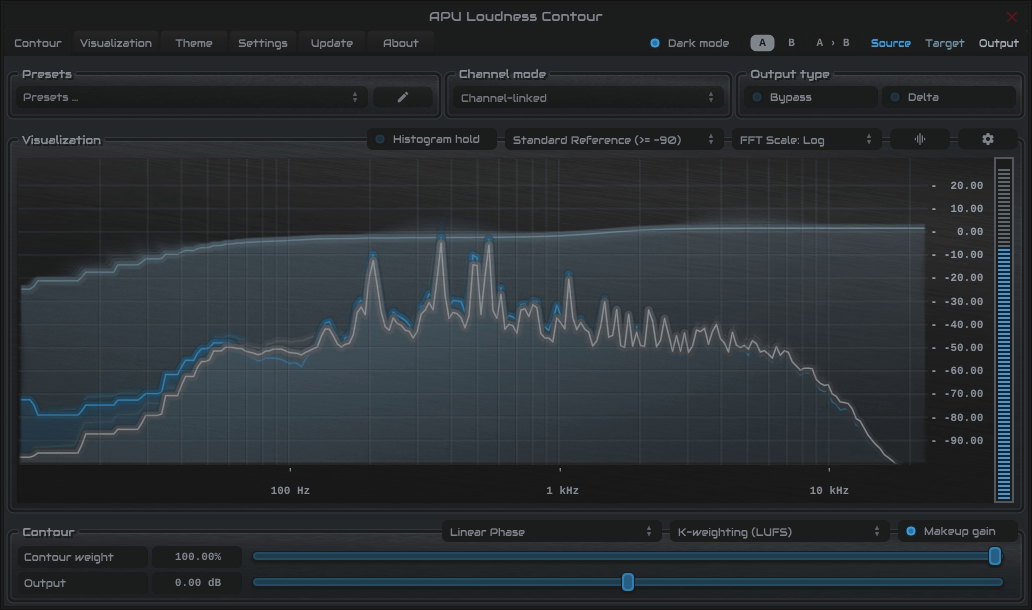
ECMA-418
ECMA-418 is a modern standard for perceptual frequency weighting, designed to reflect human hearing sensitivity in typical listening environments. Unlike legacy curves such as A- or C-weighting,
ECMA-418 is based on contemporary psychoacoustic research and aligns more closely with perceived loudness in real-world conditions.
Within APU Loudness Contour, the ECMA-418 filter provides a perceptually relevant loudness contour that can be finely adjusted via the contour weight control. This makes it particularly useful for tasks
like loudness normalization, perceptual EQ shaping, or monitoring where alignment with modern listening perception is essential.
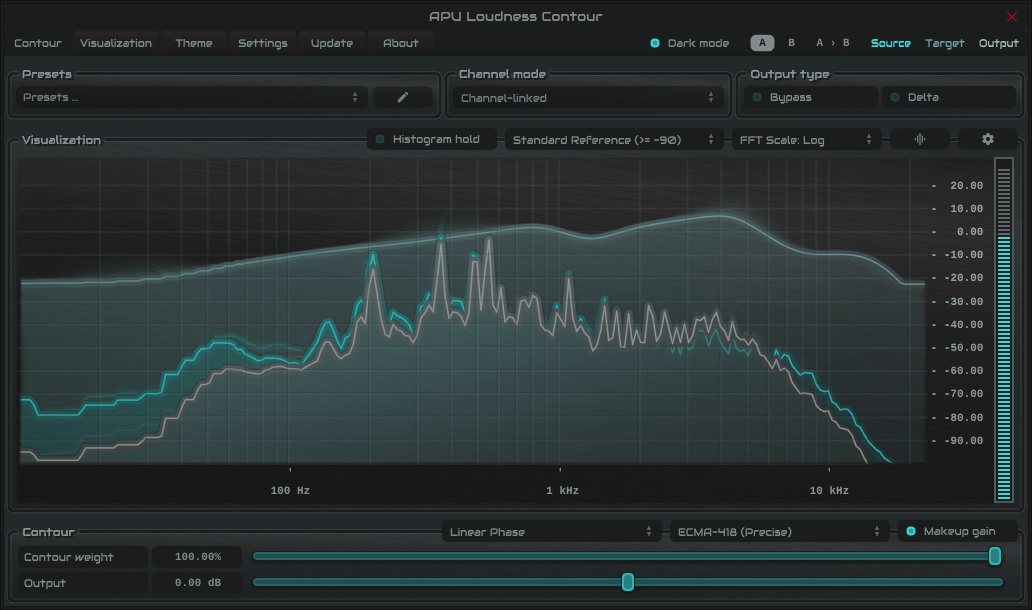
ISO 226 (2003)
ISO 226:2003 defines standardized equal-loudness-level contours based on international listening tests, capturing how the sensitivity of human hearing changes across frequencies at different loudness
levels (measured in phons).
In APU Loudness Contour, the 2003 edition of ISO 226 provides frequency response curves that adapt dynamically based on a user-selected reference level from 20 dB SPL to 120 dB SPL. This allows for precise
emulation of how the ear perceives sound at varying playback volumes. The contour weight parameter lets you scale or invert the selected phon curve.
The reference SPL parameter allows you to specify phon levels from 20-120 dB SPL with full interpolation.
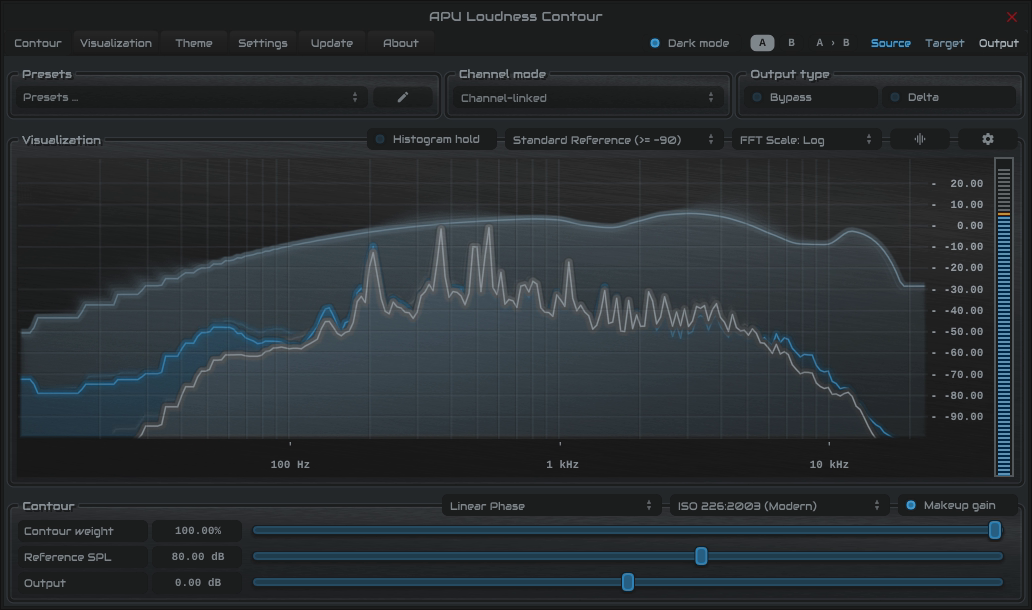
ISO 226 (2023)
ISO 226:2023 is the latest revision of the international standard for equal-loudness contours, offering improved accuracy over the 2003 edition through updated measurement techniques and expanded listening
data. It reflects more recent research into how human hearing perceives frequency balance across a wide range of sound pressure levels.
In APU Loudness Contour, ISO 226:2023 contours can be interpolated smoothly between 20 dB SPL and 120 dB SPL, allowing detailed modeling of loudness perception at any listening level. The contour weight control enables
fine scaling or inversion of the selected phon curve, and LUFS-based makeup gain ensures level consistency.
The reference SPL parameter allows you to specify phon levels from 20-120 dB SPL with full interpolation.
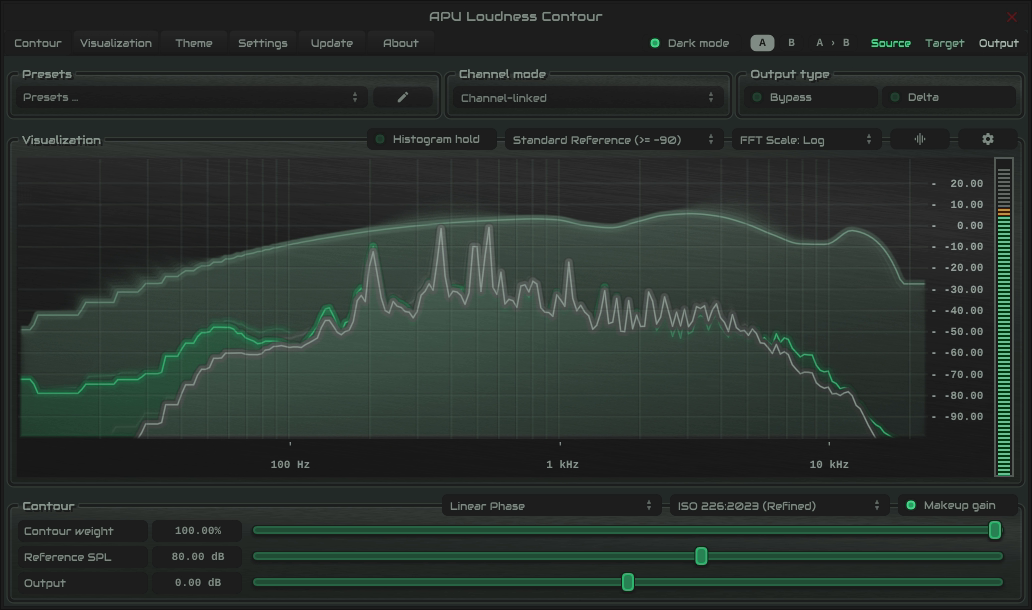
Fletcher-Munson
Fletcher-Munson contours represent one of the earliest attempts to map human equal-loudness perception, originating from the seminal 1933 study by Harvey Fletcher and W.A. Munson. Though later refined by ISO standards,
these original phon curves remain historically significant and are still referenced in perceptual audio work.
In APU Loudness Contour, the Fletcher-Munson curves are faithfully reconstructed from the original research data, carefully digitized and interpolated to provide smooth transitions between 20 dB SPL and 120 dB SPL. This allows
for the exploration of classic loudness perception models with modern flexibility.
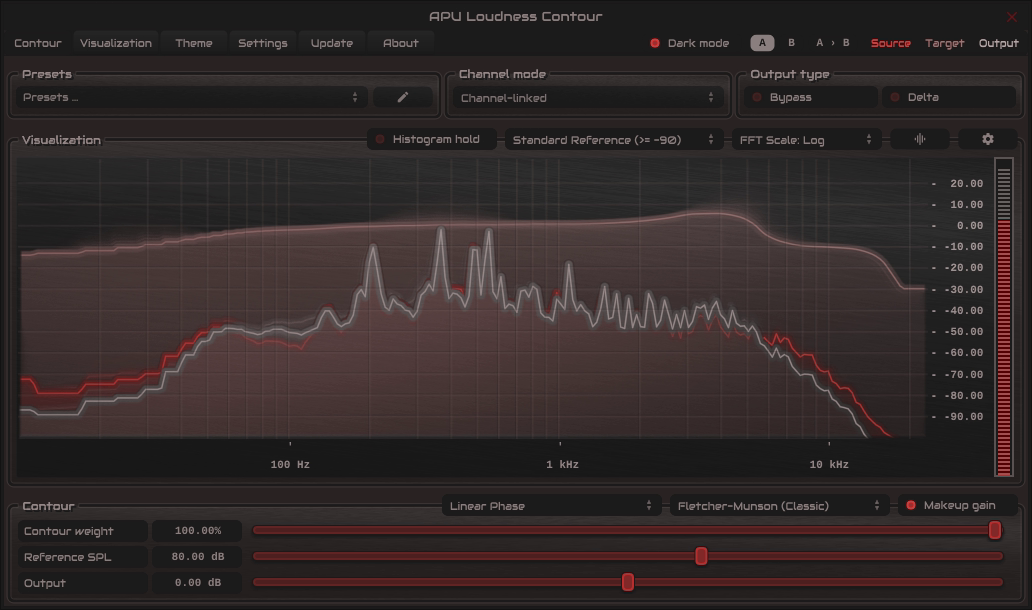
ITU-R 468
ITU-R 468 is a perceptual weighting standard originally designed for measuring noise and distortion in broadcast and telecommunications systems. Unlike A-weighting, which rolls off aggressively above 6 kHz, or K-weighting,
which is optimized for loudness metering of full-range program material, ITU-R 468 emphasizes mid-to-high frequency content where human hearing is most sensitive to transient and tonal noise artifacts. This makes it especially
relevant when assessing the perceived harshness or annoyance of noise, rather than its absolute loudness.
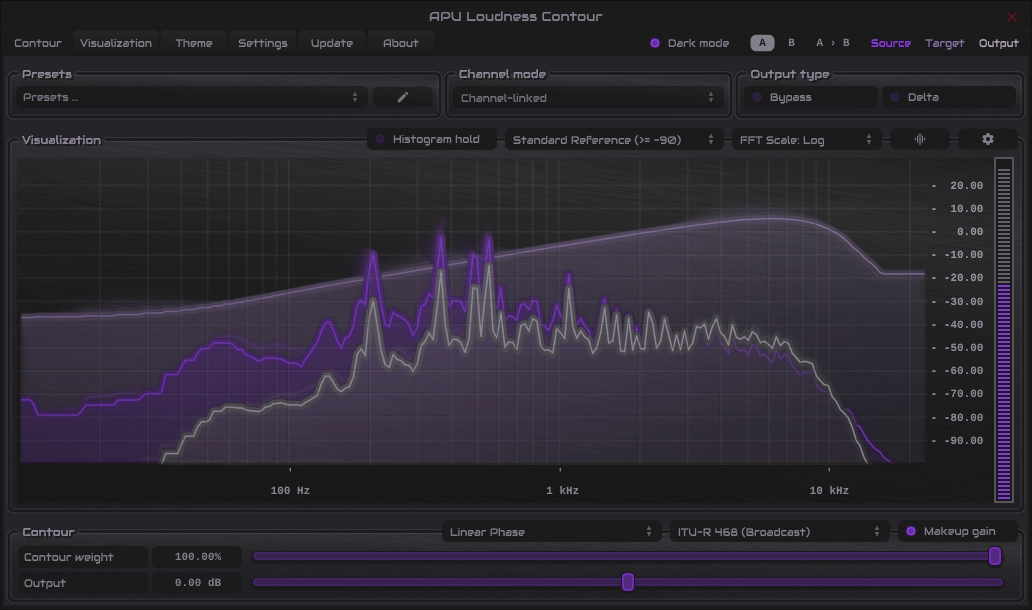
A-weighting
A-weighting is a widely used frequency weighting curve that approximates human hearing at moderate levels (~40 phon). Common in SPL meters and general audio analysis.
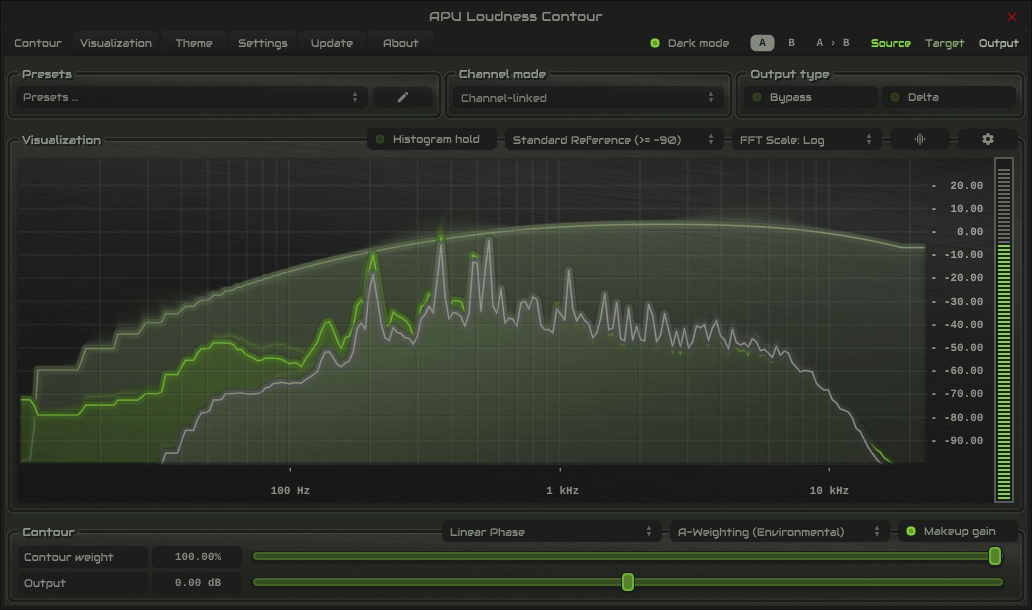
C-weighting
C-weighting has a flatter response than A-weighting and is intended for higher-level sounds (~100 phon). Often used for peak sound level measurements.
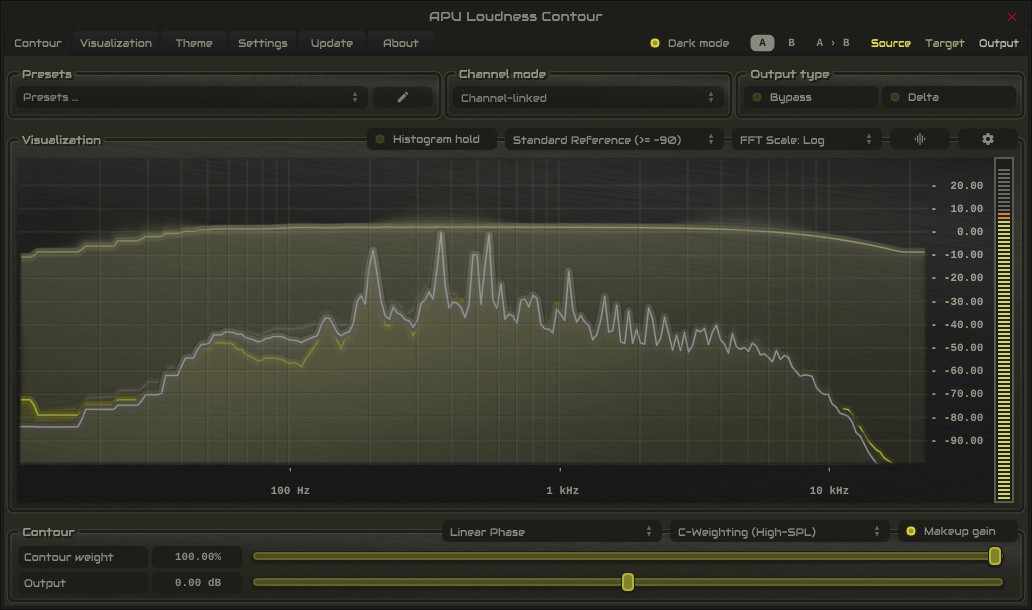
None
None disables the contour filter entirely, resulting in a flat frequency response. Useful as a reference or to bypass spectral weighting entirely.
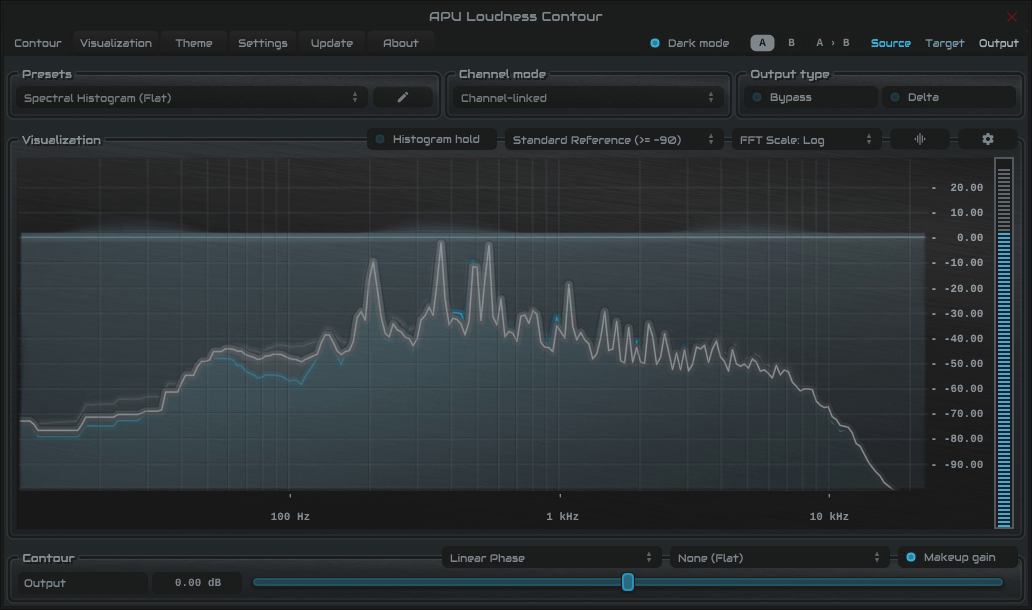
Back to top
